In Photos: Dive to USS Independence Wreck
WW II Aircraft Carrier
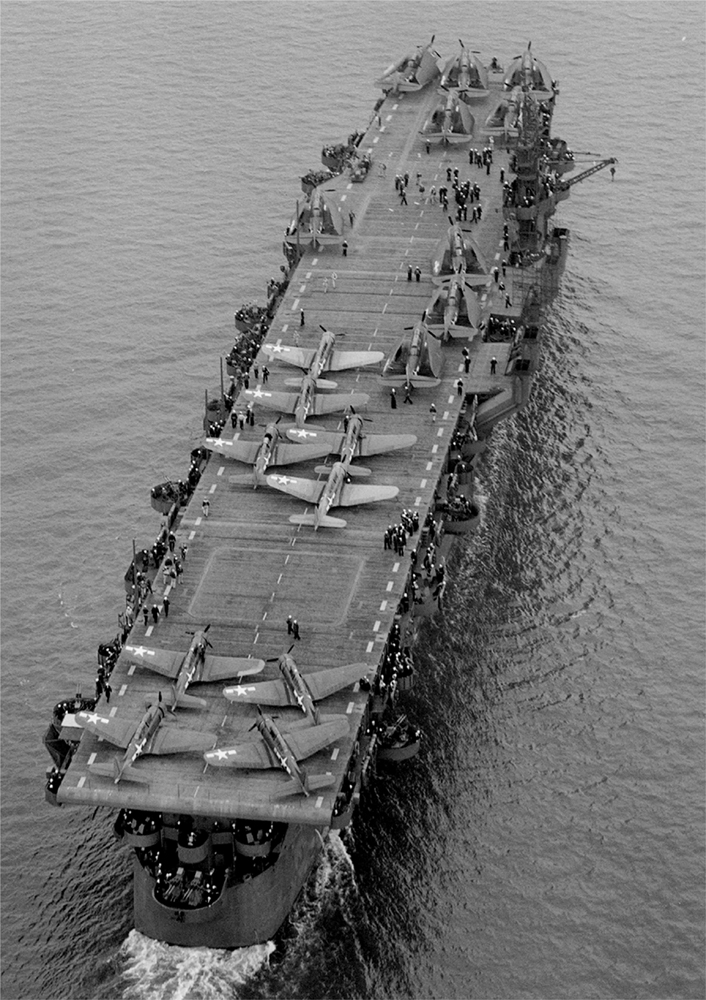
The USS Independence was an aircraft carrier used during World War II, operating from November 1943 to August 1945 in the Pacific Ocean. It then became one of more than 90 vessels in a target fleet for atomic bomb tests at Bikini Atoll. The project, called Operation Crossroads, ran from 1946 to 1958. Like other ships involved, the Independence was damaged from shock waves, heat and radiation, and it was sent back to U.S. water; on Jan. 26, 1951, the U.S. Navy intentionally sank the carrier off San Francisco.
Here, an aerial view of the carrier in San Francisco Bay on July 15, 1943.
Read on for a look at images from investigations of the sunken carrier, including visuals from the first survey by a robo sub in August 2016.
Independence entranceway
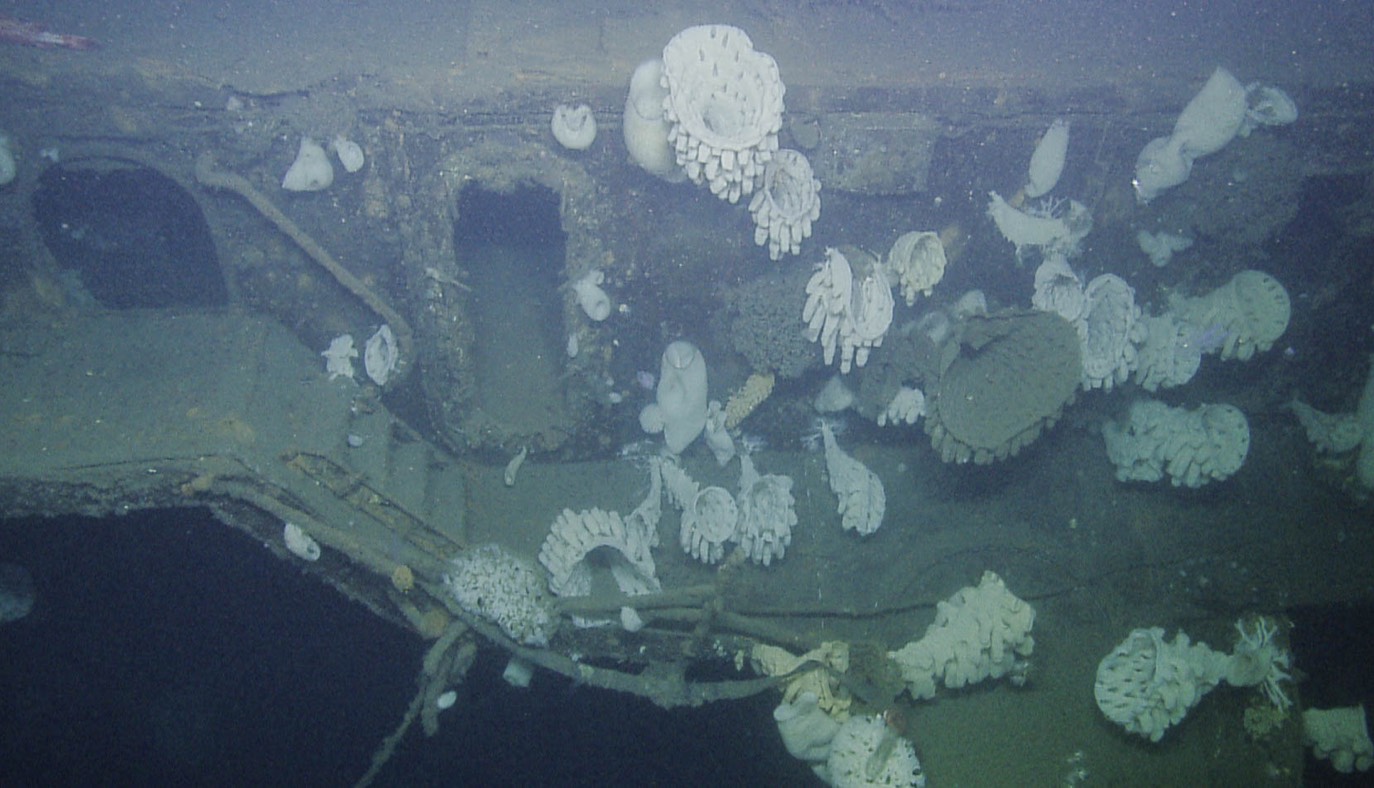
Here, the steps and entrance to a passage between two decks on the USS Independence. Torpedoes from Japanese aircraft forced the Independence to repairs from January to July 1944 in San Francisco.
[Read full story on the dive to USS Independence]
Gun tub
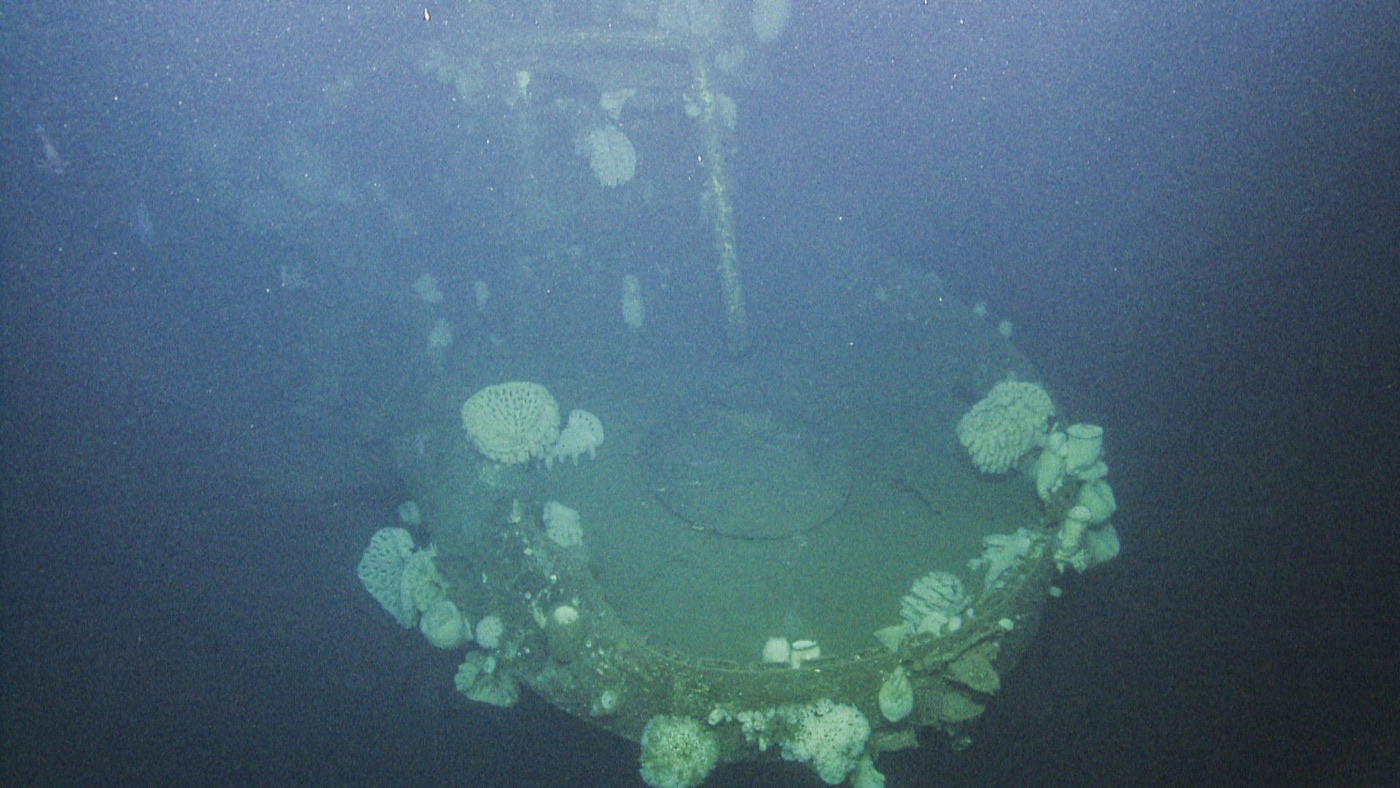
This "gun tub" hanging over the edge of the flight deck of the USS Independence was used to hold weaponry.
Independence deck
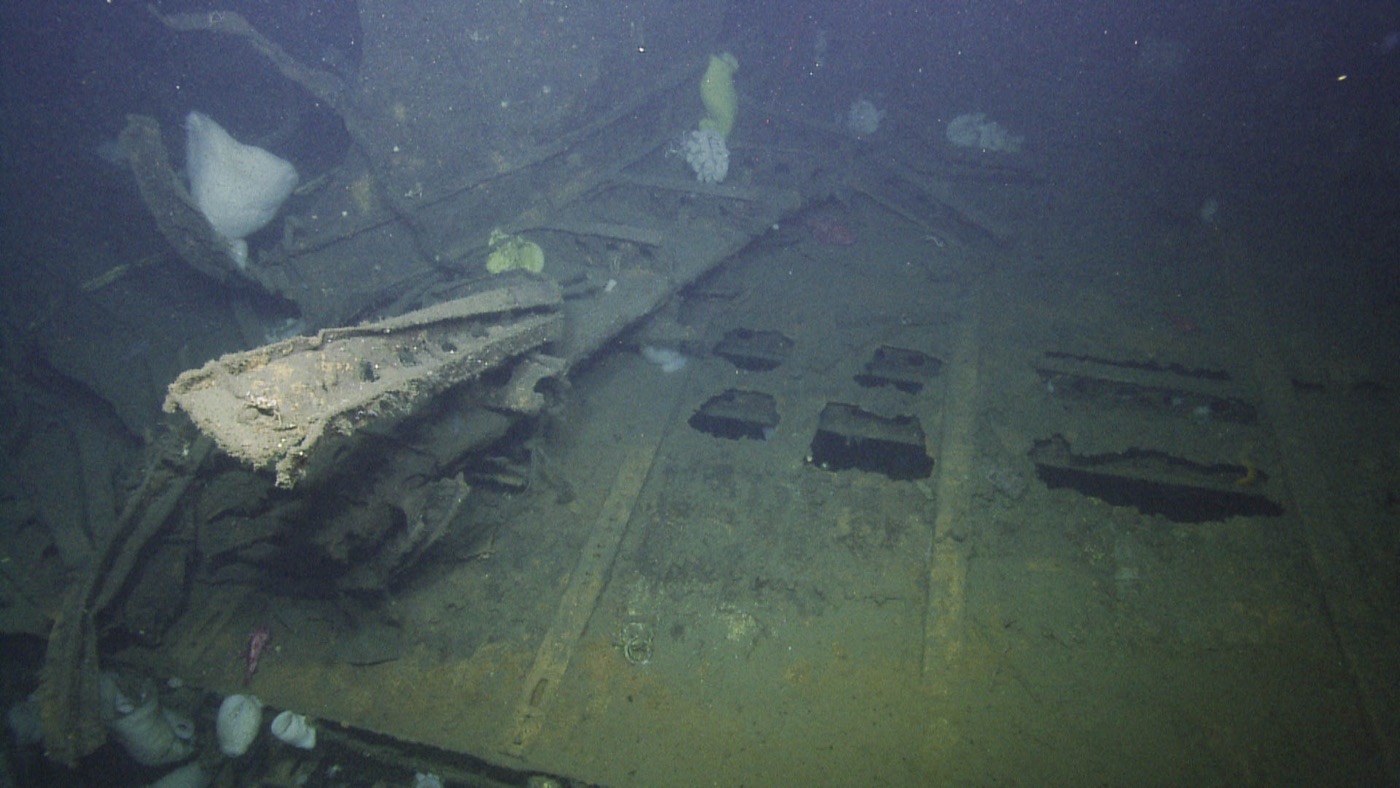
The view extending down the flight deck of the USS Independence. The Independence was the lead ship of its class of light aircraft carriers that were critical during the American naval offensive in the Pacific during World War II.
Sign up for the Live Science daily newsletter now
Get the world’s most fascinating discoveries delivered straight to your inbox.
Atom bomb tests
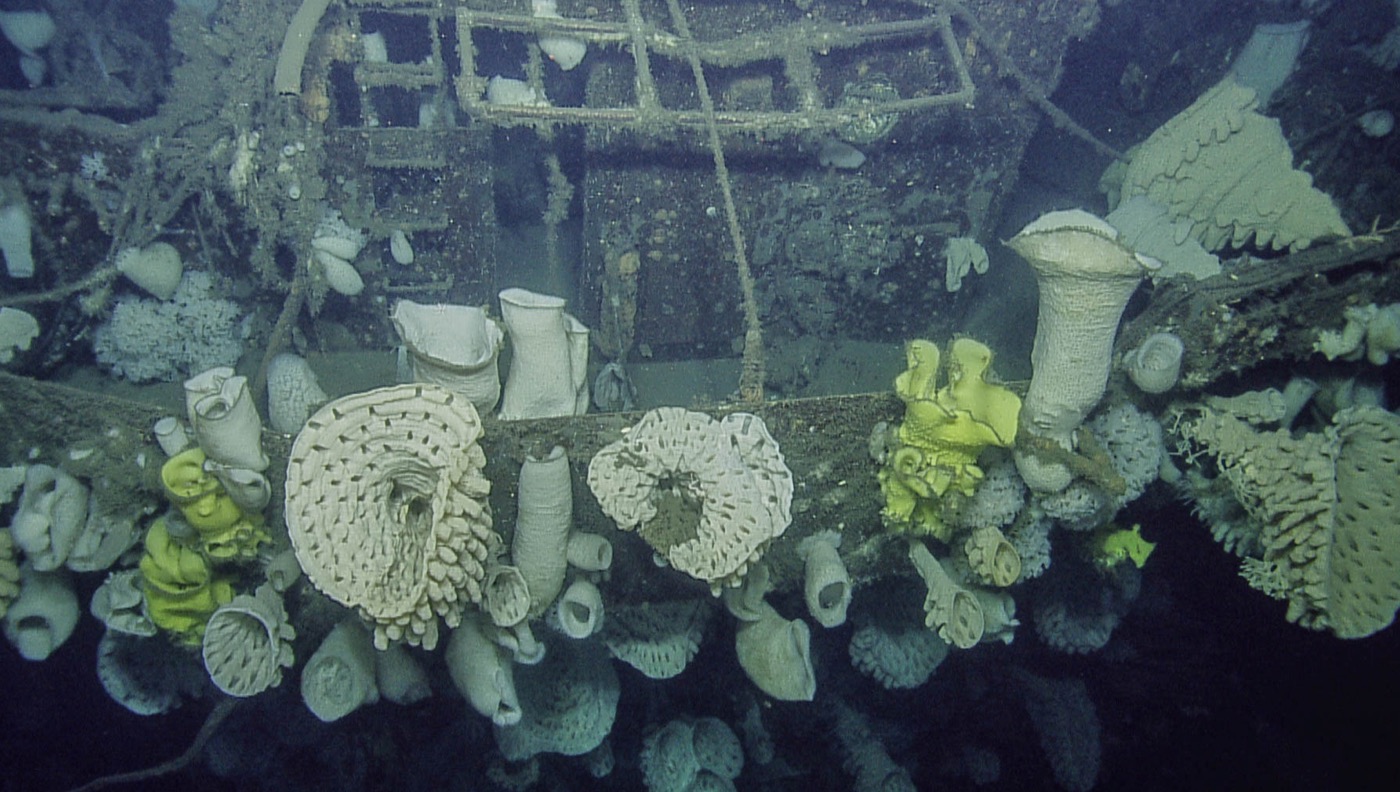
The USS Independence was one of more than 90 vessels assembled as a target fleet for the Bikini Atoll atomic bomb tests in 1946. Its wreck is now covered in a diverse array of large glass sponges.
[Read full story on the dive to USS Independence]
Blast damage
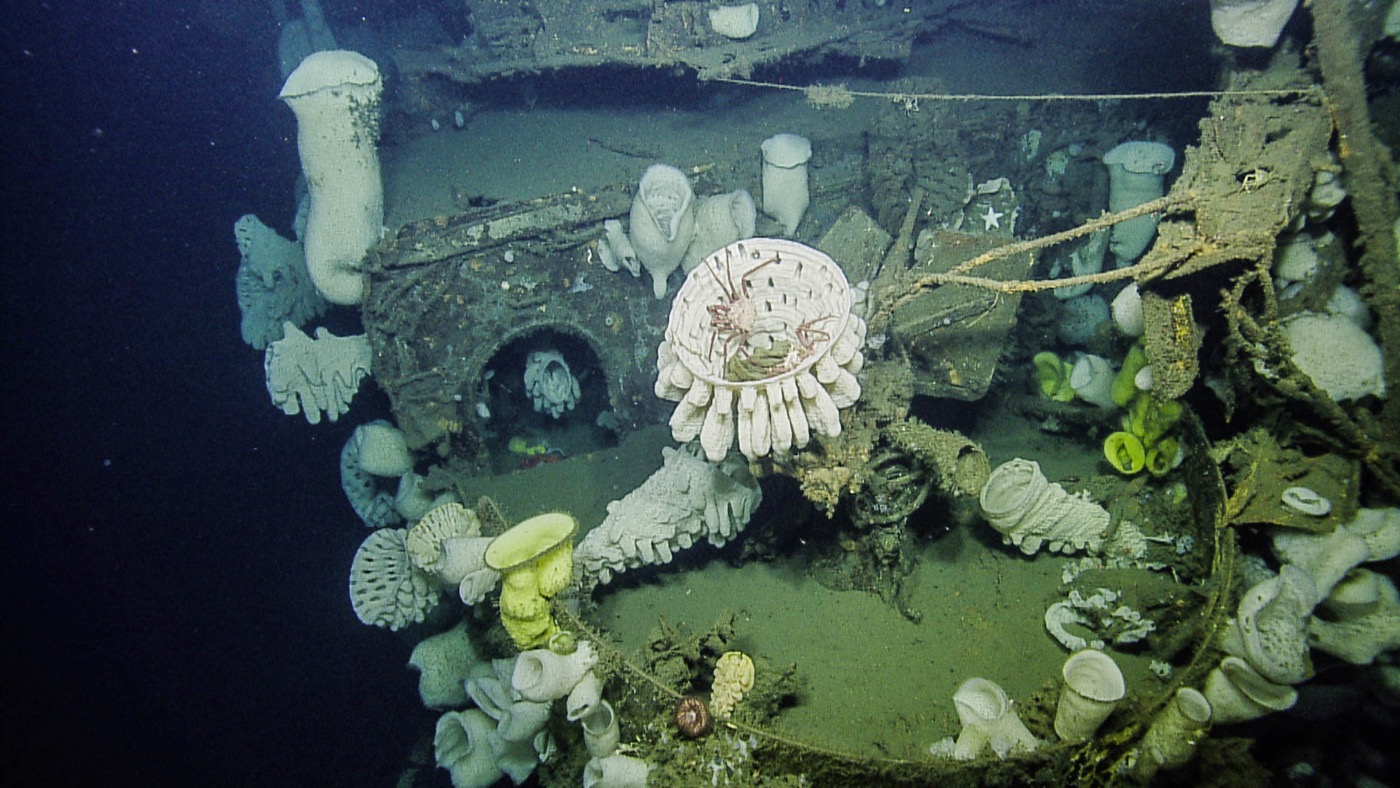
The USS Independence was deliberately sunk in 1951 near San Francisco. It was scuttled in a weapons test to determine the efficiency of two new types of torpedo warhead. Its wreck is now covered in a diverse array of large glass sponges.
Glass sponges
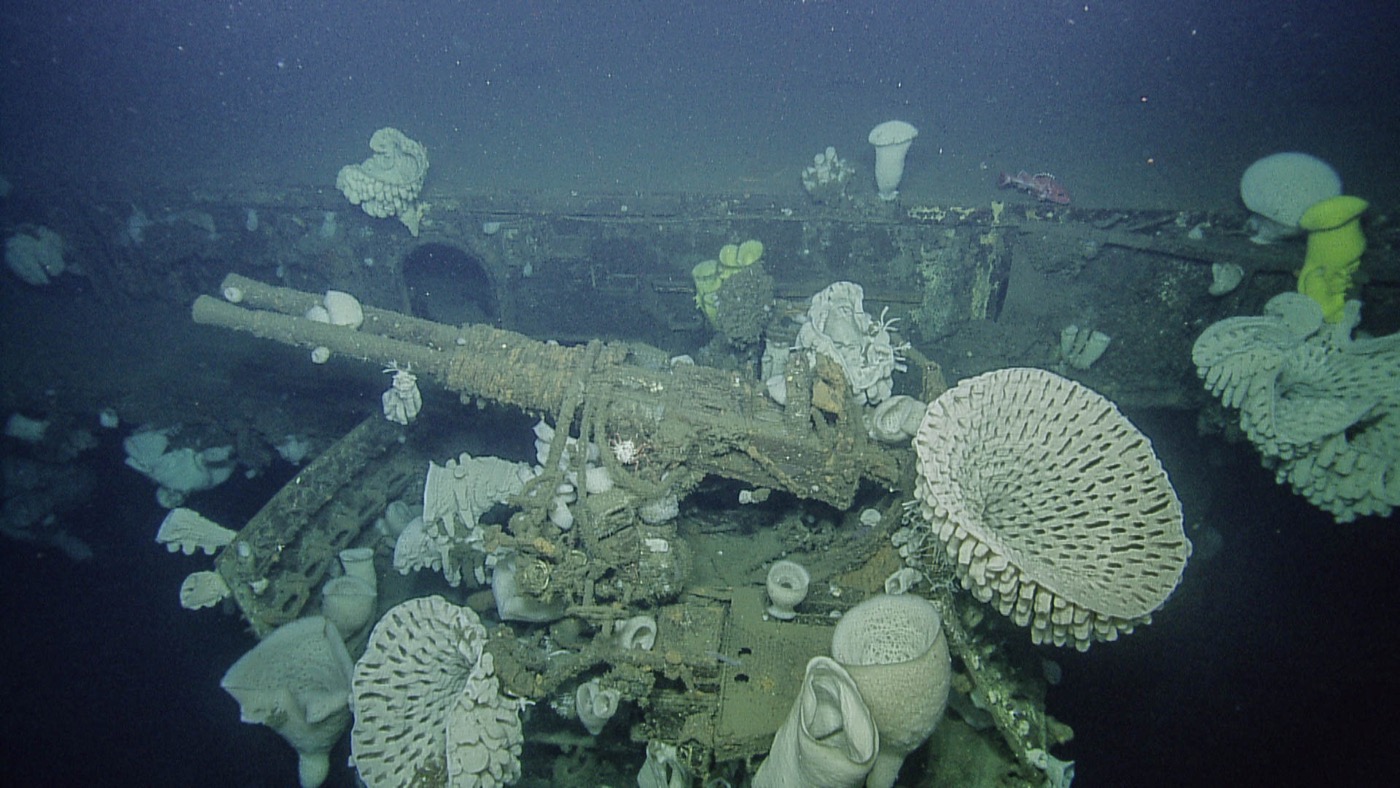
A Bofors 40-millimeter anti-aircraft gun surrounded by massive glass sponges on the USS Independence can be seen in this image. The vessel operated in the central and western Pacific between November 1943 and August 1945.
[Read full story on the dive to USS Independence]
Hellcat fighter
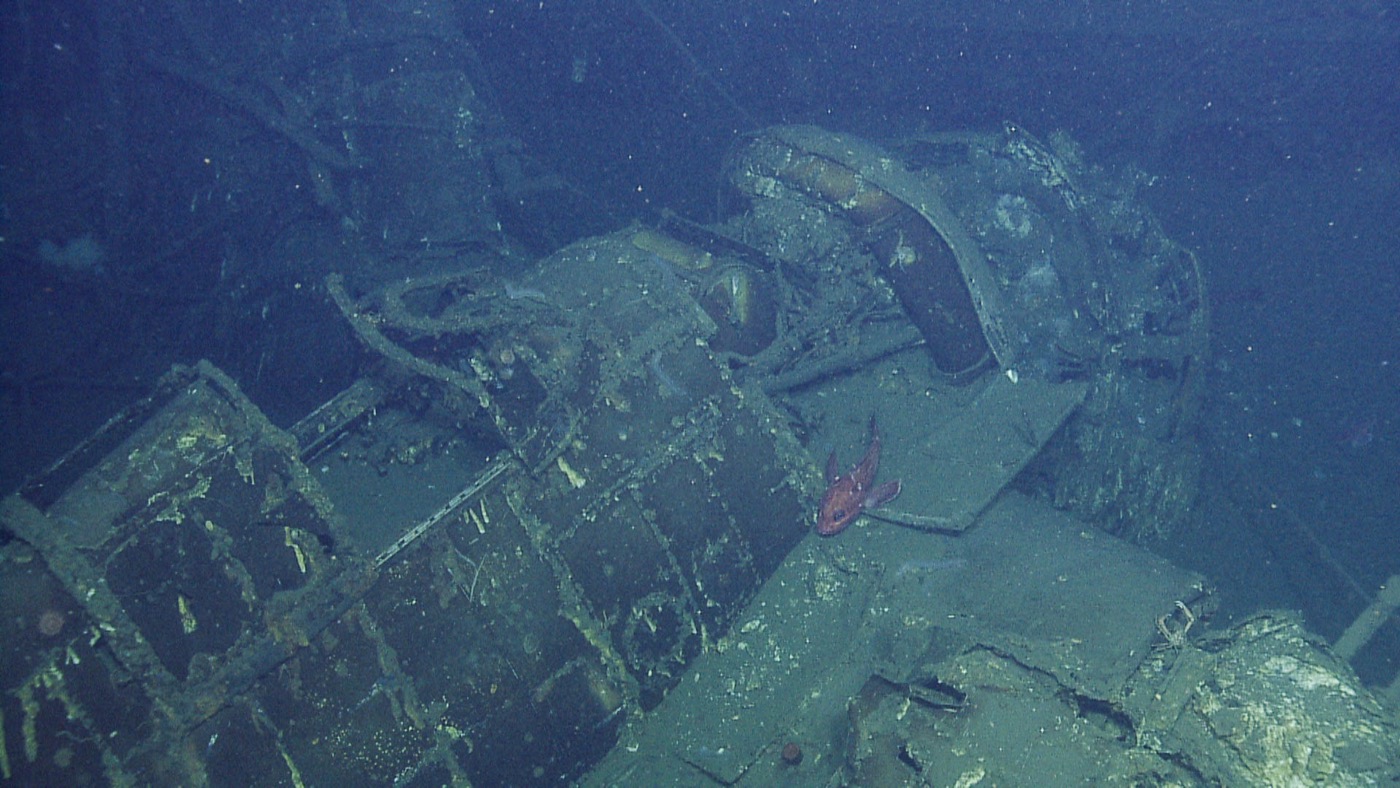
Close-up picture of the canopy of a Grumman Hellcat fighter aircraft seen in an aircraft elevator hatch of the USS Independence. That plane was not supposed to be onboard the carrier. "Records indicated that all the aircraft on Independence were jettisoned except for two, which were presumably left on board during the atom bomb tests. The records said the two aircraft on Independence were studied and disposed of, but clearly, one was not, and perhaps the other is inside, too," said James Delgado, director of maritime heritage at the National Oceanic and Atmospheric Administration (NOAA).
Christmas tree
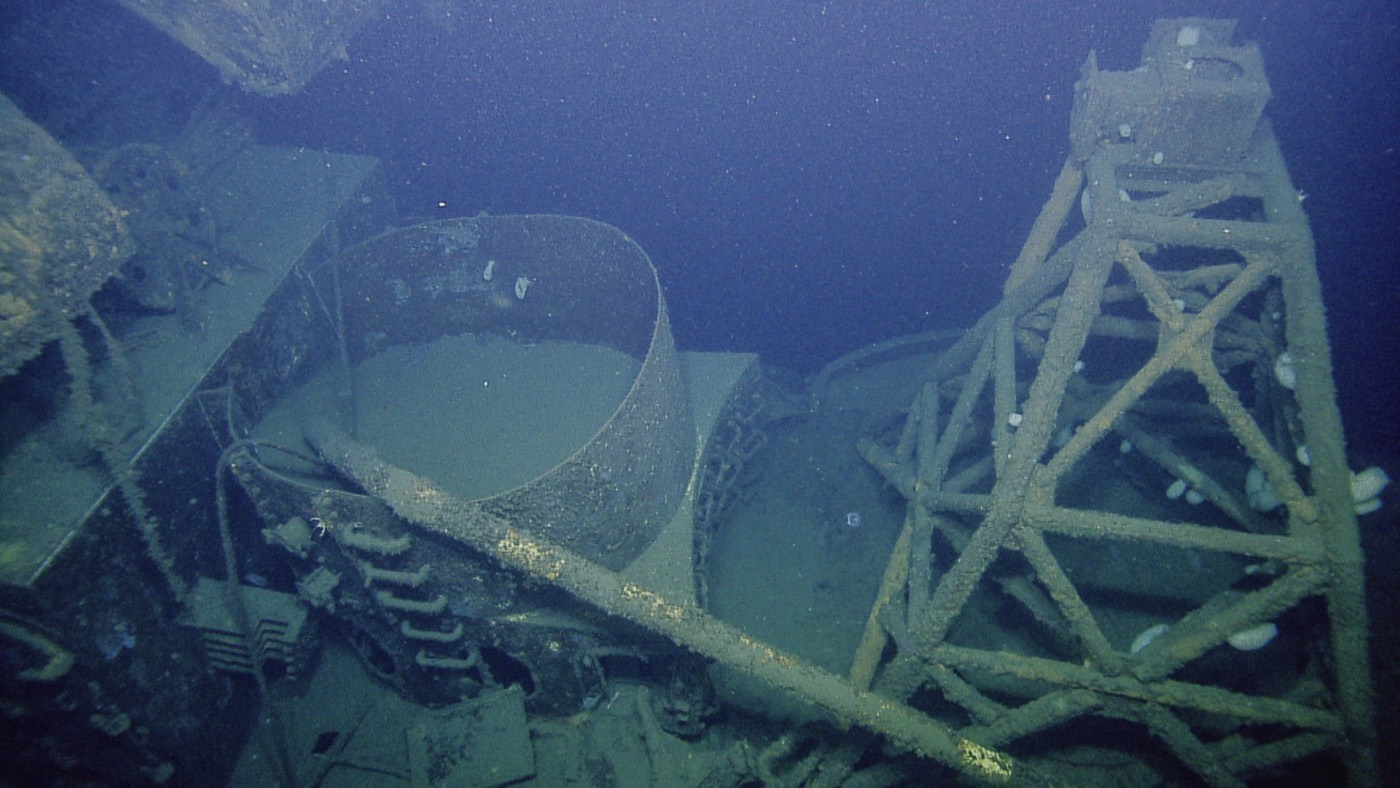
A blast gauge tower known as a "Christmas tree" (right) served as a mount for pressure measurement gauges used in atomic bomb tests at Bikini Atoll.
[Read full story on the dive to USS Independence]
Strike a pose
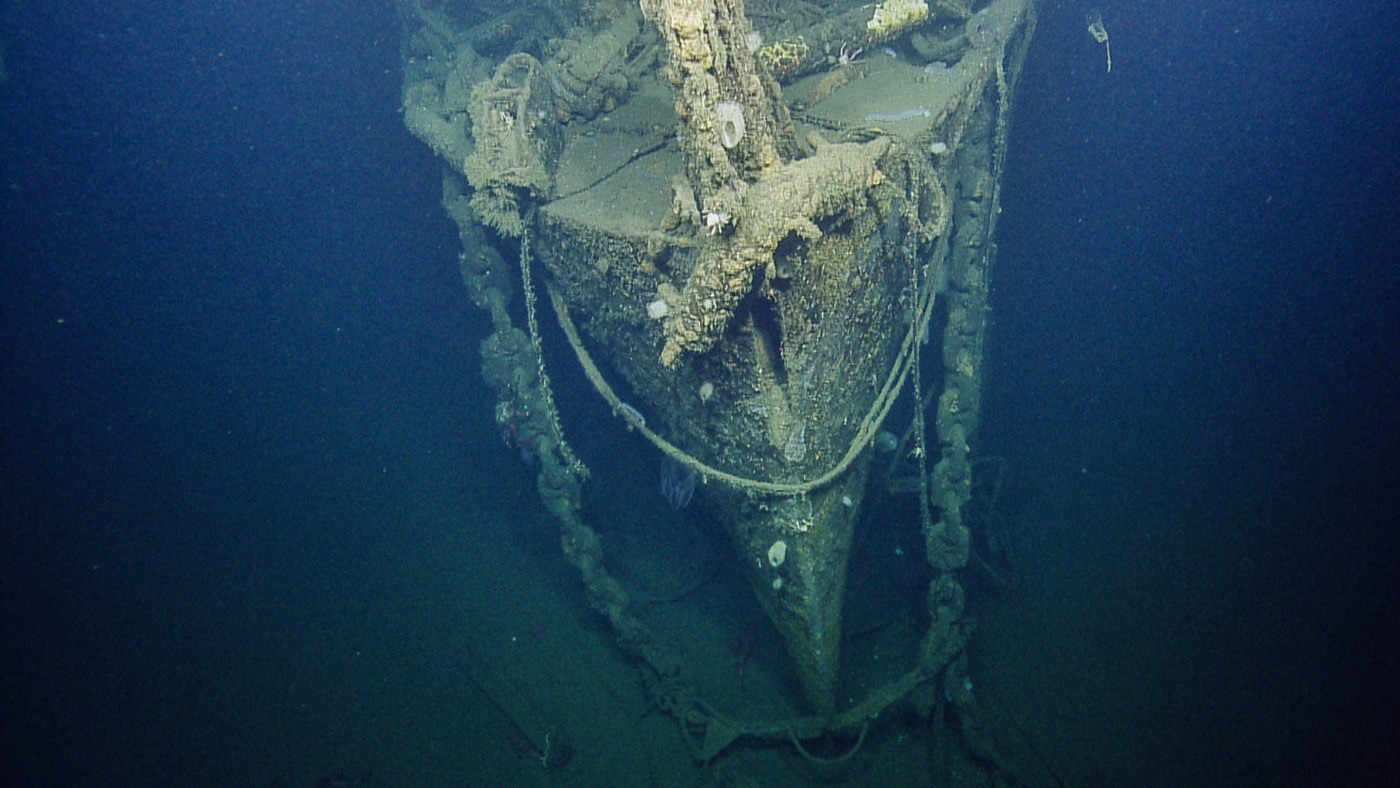
Here, the bow of the USS Independence. A 2015 survey found that Independence was resting upright in 2,600 feet (790 meters) of water off California's Farallon Islands.
Robot sub survey
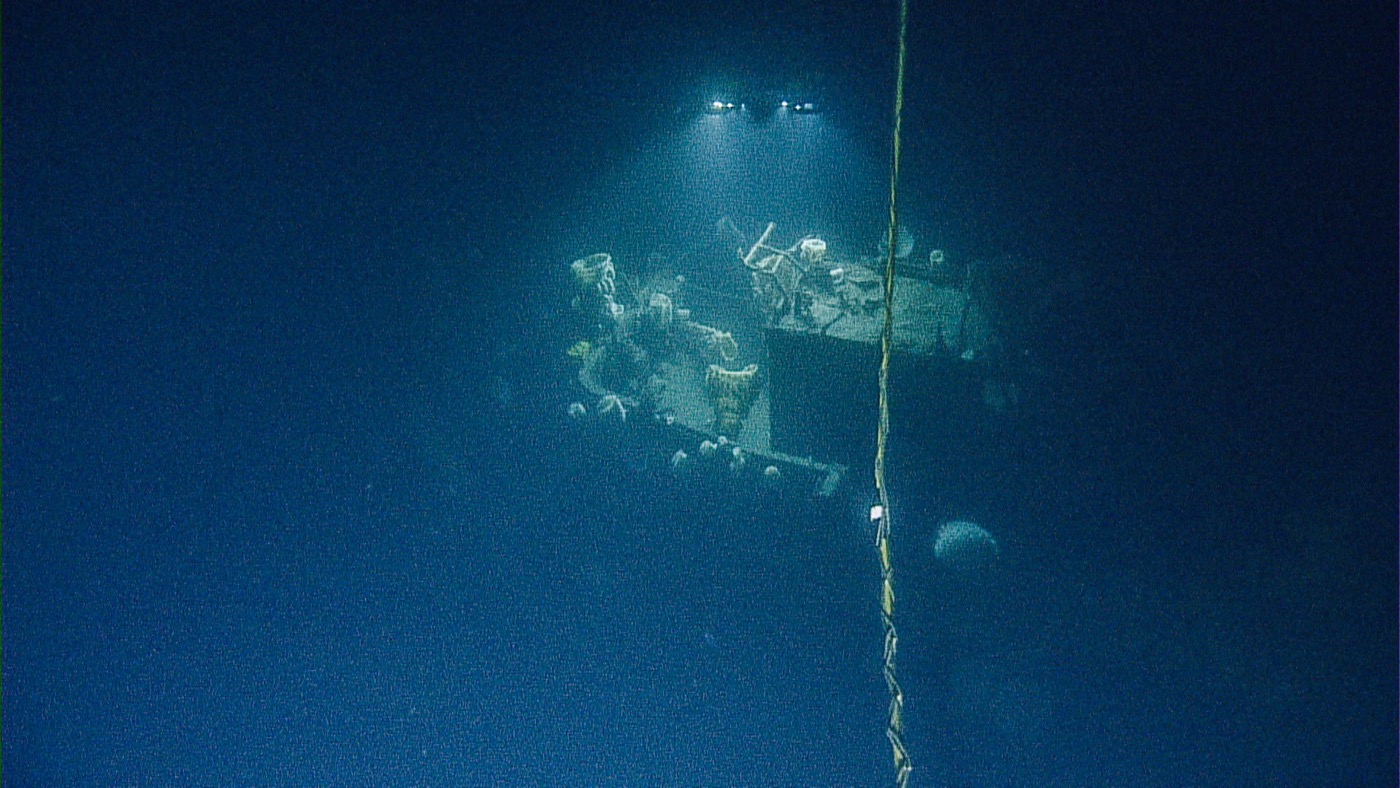
Scientists operating a robot sub have conducted the first visual survey of the wreck of the USS Independence, a target during atom bomb tests at Bikini Atoll in the Pacific.

Get a closer look at wildlife for less: This huge $60 saving on the Bushnell 10x42mm Trophy XLT binoculars — now down to their lowest-ever price at Adorama
Acer Aspire Vero 16 review: Admirably eco-conscious
Killer Australian fungus can gobble up widespread, pesticide-resistant armyworm from the inside










